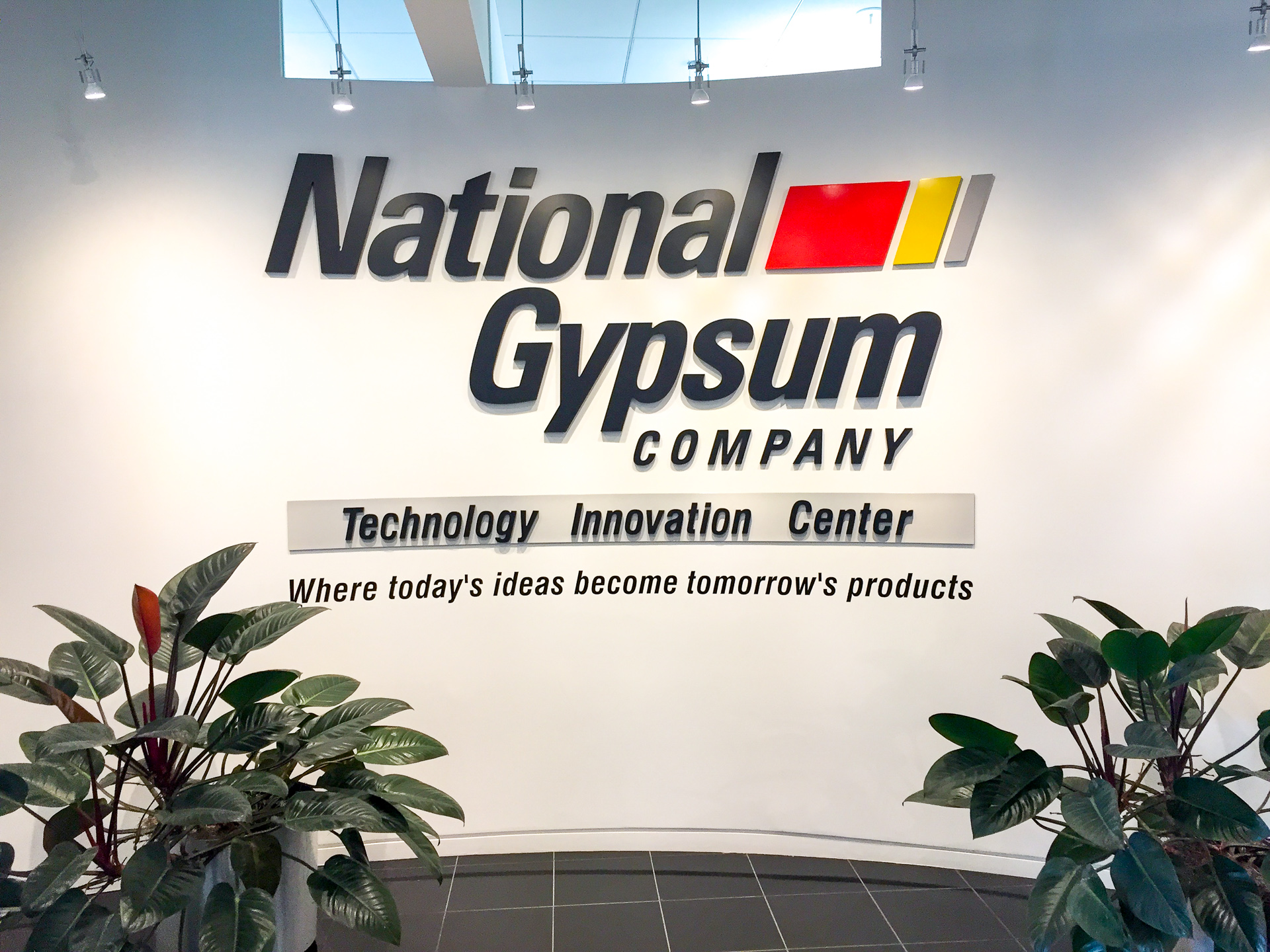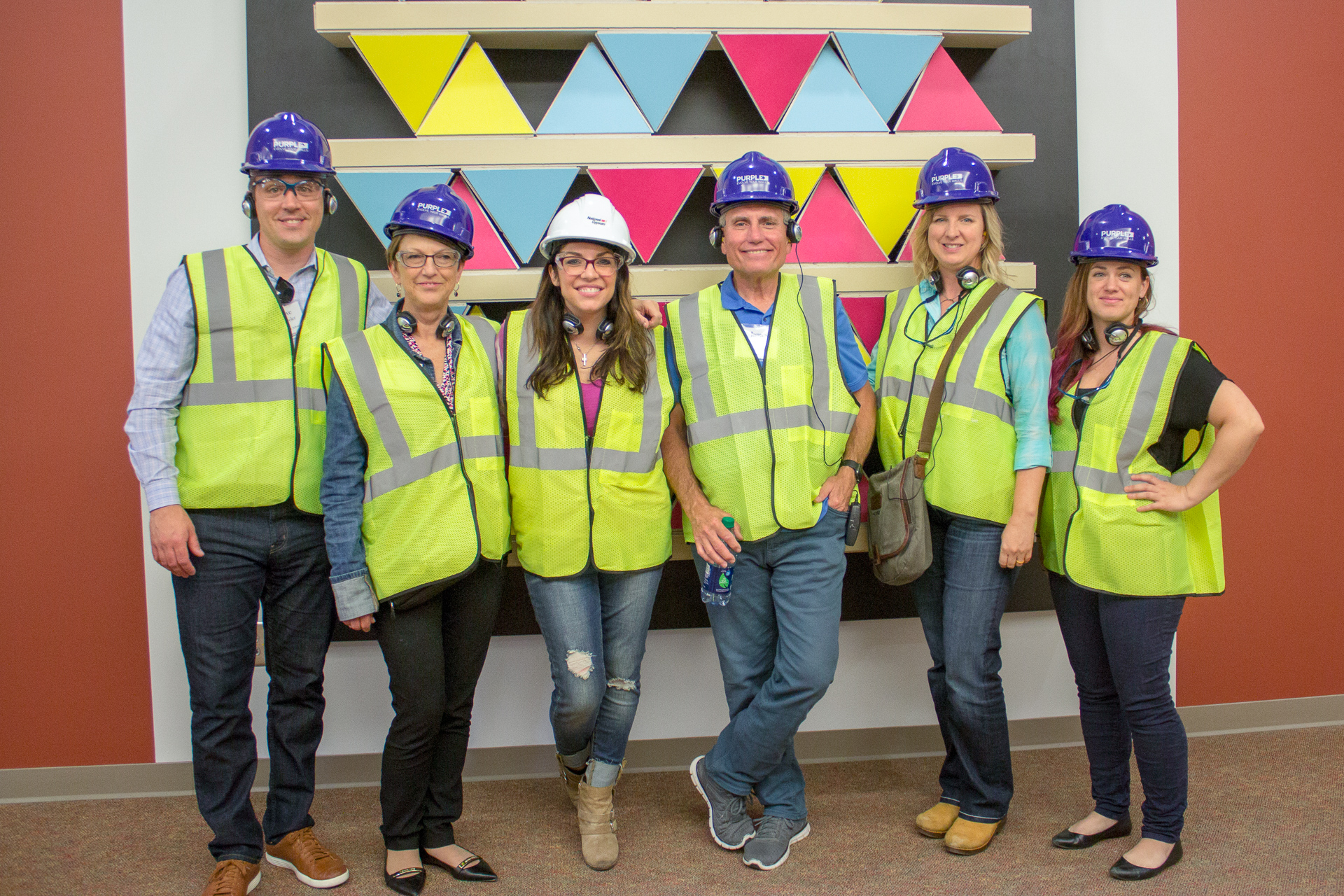Anyone out there a fan of the show, How Its Made? As a kid, I found this behind-the-scenes look at how everyday objects are created fascinating. Perhaps, in a small way, it influenced my adolescent brain into a career of showing people how I make/build/fix/renovate. (Funny that I didn’t really think about it until I started writing this last paragraph, but huh — neat!)
Often, when I start working with a brand as part of a blog partnership, I get invited to one of their manufacturing plants. For the brand, it’s one of the better ways to understand their products on a fundamental level: their company’s history, their motivations, their employees, the work that goes into new product development, and all sorts of things that lead up to the last step of using it in a home. For me, it’s an invite to the living version of the show I used to watch as a kid.
This fall, I’ll be working with National Gypsum and using one of their unique types of Purple XP drywall for a new sponsored project. But until I took the trip, I pretty much assumed all drywall was relatively the same. I mean, other than making sure you use the correct thickness for your wall or ceiling, that’s really all there is to it, right?

Turns out — not true! If you see those purple drywall panels in the store, they have a few secrets up their sleeve…
ASK FOR PURPLE — BECAUSE IT’S MOISTURE, MOLD, AND MILDEW RESISTANT
It seems like I am learning a lot about water this year: moisture is the enemy of keeping a safe, clean, worry-free home. Indoors and out, bathrooms and kitchens — all of your home regularly interacts with water. At the same time, we need to prevent mildew, mold, and rot. That’s why we use pressure-treated wood and flashing tape on outdoor projects; it’s why polybutylene pipes became a problem; and it’s why we get all freaked out when we see a leak in our ceilings. It’s a very simple concept, and yet it is a very tall order for most manufactured products. I will now and forever remember the quote I heard while in Charlotte:
When owning a home, it’s not a matter of if you will have a moisture problem, it’s when.
Purple XP® drywall: if the name doesn’t mean much to you yet, it’s worth noting. What differs most about this product (other than the noticeable color, of course), is that it’s manufactured to be moisture, mildew, and mold resistant. You may have read about me using paint products with mildew-resistant properties in the past, and the reason is the same: to prevent that very expensive call to a remediation specialist. Toxic mold is not only extremely hazardous to have in the home, but it can be very expensive to remove (and once it’s in the drywall, it has to be ripped out). While paint products are still a good idea, it’s not going to do me much good if the back paper on the drywall is heading to Mold City.
Less than a month later after my trip, I had problems with my air conditioning unit, which forced me to cut a big hole in my ceiling. There was also the time my master bath’s hot water valve popped right off, flooding the room. Brittany from Pretty Handy Girl was also on the trip (I love it when we get to hang out!); she’s had her share of not-so-fun adventures with mold. Eventually, I think every homeowner has a story of close calls or giant disasters!
A rare occasion where we’re hanging out but not covered in muck 😉
Bottom line is, if using a product likes this keeps mold from growing in the first place, and you may not always catch something growing behind your walls, it’s smart to prevent it rather than spend thousands of dollars repairing the damage (or deal with the health effects on those who live in the home).
HOW ITS MADE — PURPLE IS… GREEN?
So, I started this whole post about how things are made. And I definitely learned more about that during the trip. As you might assume from the name National Gypsum or drywall’s other name, “gypsum board,” drywall is created from gypsum. Plenty of it is blasted out of quarries all over the country, which looks a lot like this when holding it in your hand:

